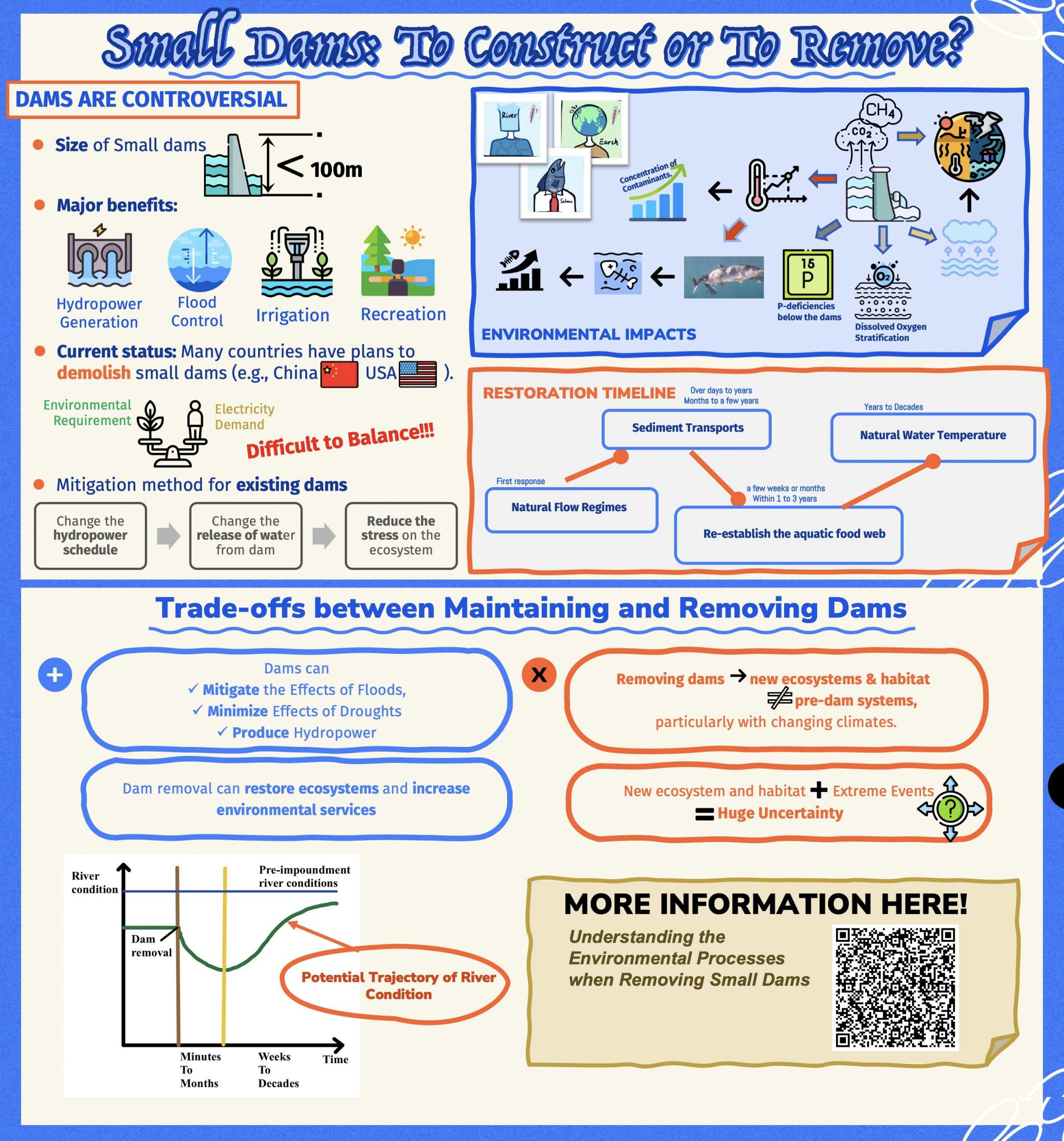Understanding the environmental processes when removing small dams
Dingfan Cui, MLWS 2022
At the end of their life-cycle dams can be removed or rebuilt. Dam removal can be used to recover the ecosystem; avoid the dam failure and the loss of property and life. Many countries have promulgated policies for removing small dams and have begun to carry out small dam removals projects. Therefore, a comprehensive review of the challenges and benefit of small dam removal can be useful to wide range of managers. This report reviewed literature and provided case studies material to show what can be learned when contemplation dam removal. Dams have significant impacts on river ecosystem, causing changes in the hydrological regime, water quality and river channel morphology. Small dam removal can result in short-term problems (reservoir erosion, downstream sediment transport, and ecosystem disruption over minutes to months) and long-term responses (changes in overall watershed conditions over weeks to decades, including habitats improvement, environmental services restoration), which can be highly variable because of the different characteristics of dams and reservoirs. In many watersheds climate change can have positive or negative impacts on the aquatic ecosystem before or after dam removal. However, climate change will likely contribute to the creation of a different ecosystem that was present before the dam was built and the one that was created during the period of dam operations.
